Streetwise consumers, resistant to traditional marketing methods, are forcing brand owners to look much harder at the ways they get their messages across. This has given rise to the creation of brand experiences which aim to use all the marketing disciplines to build a relationship between consumers and brands. The move is born out of the realisation that spending millions on TV advertising is no longer a surefire guarantee for generating sufficient numbers of brand loyal consumers, so marketers are searching for alternatives and building a mix of activities around their brands.
Traditional TV, cinema, poster and press advertising continue to play critical roles, but as the population acquires more choices in the media it uses, and is constantly finding new ways to spend its leisure time, it becomes more difficult to target brands' key consumers.
So new methodologies are being developed to address this. These first have to grab consumers' attention and keep it and then they have to encourage people to buy into the brand message.
In short, marketers are finding that traditional advertising is no longer enough. Instead, they are turning to processes that offer a more comprehensive brand experience. Increasingly they have found they need to involve more than just one of the senses. Seeing a message on a poster site or a TV works better if it is reinforced by the other senses such as touch, taste and smell, and by involving the consumer in the brand.
Such experiential marketing' is becoming an essential tool for the fmcg industry and today covers an array of techniques for getting closer to consumers, including fresh approaches to sampling, the use of mobile phone technology and the ownership of consumer events.
One of the leading exponents of brand experience techniques, the specialist agency RPM, has been pushing its message for the last decade. "At the start we were ploughing a lonely furrow," says client services director Hugh Robertson. "But more companies are taking it on board." His client list bears this out. Those that have sought out RPM include Unilever Bestfoods, Guinness UDV, Marks and Spencer, Britvic, Bulmers and First Drinks Brands.
"People come to us looking for ways of getting their brand messages across, including sampling exercises that work. What we offer is light years away from the old biddies behind trestle tables in supermarkets offering plastic cups of products they know nothing about," says Robertson.
When First Drinks Brands wanted to get its South African Amarula Cream liqueur closer to potential consumers at the end of last year, it ditched its TV campaign for a sophisticated sampling initiative in major multiples.
Brand manager Claire Knott says the company will continue to use TV but in this peak sales period wanted to get closer to consumers. "We wanted to put across the brand's essence and personality and tell people where it comes from. Straightforward sampling won't do this and TV does not talk directly to consumers," she adds.
First Drinks wanted to target 35-year-old women, who are key shoppers in multiple grocers. So it sent in teams of South Africans equipped with a custom-built sampling stand which included a 9ft mock up of an amarula tree, the sounds of trumpeting elephants, the scents of Africa and a video to tell the story of the brand.
"Retailers had never had anything like this in their stores. There have been roadshows outside them, but nothing like this. RPM sold us on the concept of creating an experience for consumers that they would not forget. Coming off TV at that key time of year was a big step to take. It was a calculated risk but we believed the consumer reaction to the Amarula experience would bring benefits," says Knott. "We talked to 400,000 consumers and were looking for a 12.5% conversion rate. Initial feedback from the retailers indicates that we are on track."
The instore Amarula experience incorporated a carefully created scent. But using smell to sell is not new. House vendors have long been told to brew coffee to attract buyers. And supermarkets perfume their atmospheres with the smell of baking bread.
According to Simon Harrop, managing director of the Aroma Company, which has worked with most major multiples and manufacturers such as Lever Fabergé andSC Johnson to develop instore aroma testing, this brings definite benefits. "The objective for the brand is to impart information," he says. "And aroma is one of the key characteristics. Also, from retailers' point of view, a testing device provides instore theatre." The company's poparoma' a bellows-type device which can be clipped to a shelf or dumpbin emits the product's fragrance when squeezed. "We put back a little of what modern packaging has taken away," adds Harrop. The focus so far has been on shampoos, soap powders, perfumes and deodorants Timotei shampoo, Glade air freshener and Asda's own Berry Bliss and Meadow Fresh-fragranced household cleaners are just a few of the successes but the company has recently been exploring the possibilities of food and drink.
The new technology has limitations, however.
"Unfortunately, we can't reproduce the smells that most people ask about freshly brewed coffee and freshly baked bread. But we can do others, such as ginger cake, coconut and Christmas spices," says Harrop. "Anyway, food is about the experience, not only the smell."
For a project with Ballantyne whisky, rather than try to recreate the whisky smell, the company used fragrances of heather, peat and Highland air to capture the experience of the brand rather than the product.
"I wouldn't recommend only using the smell with some products," adds Harrop. "It's not necessarily the most appealing characteristic. Wine, for example, tends to smell like vinegar."
An abortive attempt by Unilever Bestfoods and another olfactory marketing company to reproduce a Marmite scratch n' sniff device would bear this out. "We just could not make it smell like Marmite," says a Unilever insider.
But if the nose won't do, then the ears just might. Sound is also playing a higher profile in the total brand support package. In the last decade products have worked hard to link their brands with the kind of music that their consumers enjoy.
But brand owners are finding that being a title sponsor of a major event is only part of the answer. RPM's Robertson says: "Music fans are sceptical about big brands muscling in on their territory. Gone are the days when you can just badge an event."
Bass Brewers has taken this philosophy on board. Last year it cut its links with football's Premier League and has announced that most of its sponsorship budget will go behind a multi-layered music deal that will give it access to key promoters, leading bands and top venues.
The brewer's head of sponsorship Stuart Cain says:"It is a big sponsorship and will do different things from the football deal. We want to show that Carling creates opportunities for people to do what they want in terms of music. We want to tap into the the emotion that music generates and get Carling associated with it.
"We have acquired rights which give us the flexibility to tap into whatever is topical and making music news and get the brand associated with it. This is something completely different from anything we have done before and it is about giving Carling a contemporary, modern and premium feel."
Bulmers looked to the potential of an innovative music sponsorship to improve the fortunes of its leading cider brand Strongbow which needed to recruit 18 to 24-year-old drinkers.
Robertson says: "There were some big issues for the brand. The taste perceptions were wrong and people were rejecting it."
The strategy to change consumer views was led by the Live to Loaf TV ad campaign featuring Johnny Vaughan. Bulmers wanted to develop the theme and worked with RPM on the music festival angle. "But music fans are cynical people and they want honest dialogue," says Robertson. So the Strongbow Loafing Lounge was created. The idea was to put something at the heart of music festivals that would offer a credible and memorable experience linked to the Strongbow brand. The lounge was designed as an exclusive club with an underlit dance floor, plasma screens, chill out zones, PlayStations and a large bar. Outside, teams of rocket packers toured the festival giving out free samples of Strongbow.
A second tier of the strategy was a move to Ibiza where the brand sponsored party nights at the island's leading venues Café Mambo and the Eden Club.
Bulmers insists the investment has paid; follow-up research showed that 23% of people who sampled Strongbow at the events turned into regular drinkers.
Brand manager Philip Pick says: "This put the brand in front of them in an environment where they were up for trying new things. The Loafing Lounge can communicate more about the brand than press or TV advertising. It is also a very cost effective way of recruiting."
He adds that the move to Ibiza helped the brand to reach a particularly elusive group of young consumers when they were enjoying themselves on holiday and when they were most likely to think positively about the brand.
This year the concept will be further developed and Bulmers is planning to spend more on these marketing initiatives and on TV advertising. Pick says: "People now look out for the Loafing Lounge at music festivals. It is becoming part of the culture of the summer music scene. We are now working on how we can extend the experience and on how we can make it an even more integral part of young people's lives."
And that's true for all brand owners who employ experiental marketing techniques in a bid to get consumers to relate to their products.
Adrian Troy, brand controller at Britvic, maintains the brand message can be delivered in a number of ways. "Advertising can create an image for a brand but the challenge is how to get the supporting promotional and below the line activity to emphasise the emotional benefits of the product."
The work the company carried out on its Purdey's adult soft drink demonstrated the possibilities. Troy says: "The brand is strong in London and has a core of loyal users who know what it does for them. But outside the south east it is seen as a glucose based drink which is a cross between Red Bull and Lucozade."
So Troy turned to experiential marketing to get Purdey's image reappraised and took the brand to city centres with a co-ordinated campaign targeting young, upmarket professionals.
Britvic used striking media, such as giant poster sites and branded bus shelters with audio effects, and also employed a brand experience sampling team. It took over city centre parks and brought in experts in relaxation techniques such as yoga, pilates and massage, around which the sampling teams operated.
Troy says: "The activity was designed to impress on consumers the image of Purdey's as a reviving and re-energising drink."
Don't be too surprised to see more brands being paraded through parks and other public spaces as companies work harder to get their messages across.
Concern over the penetration of TV advertising and its escalating costs have prompted marketing teams to look at the most effective ways of communicating with consumers. At the same time purchasers have become much less sensitive to traditional marketing messages and reject or ignore many of them.
So marketers are talking more and more about developing a total brand experience that will help change opinions and purchasing behaviour, and, hopefully, recruit new consumers. Little wonder experiental marketing is now the fastest growing element of promotional work behind fmcg brands. n
{{COVER FEATURE }}
Close menu
- Home
- Retail & Wholesale
-
Products & Suppliers
- Back to parent navigation item
- Products & Suppliers
-
Product Categories:
- Back to parent navigation item
- Product Categories:
- Alcoholic drinks
- Bakery
- Cereals & breakfast
- Cheese
- Chicken & poultry
- Chocolate
- Confectionery
- Crisps, nuts & snacks
- Dairy
- Fish
- Fresh produce
- Frozen
- Household
- Meat
- Own Label
- Sauces & condiments
- Seasonal
- Soft drinks
- Vaping
- Vegan & plant-based
- World foods
- Suppliers
- People
- Reports & Data
-
Topics A-Z
- Back to parent navigation item
- Topics A-Z
-
Popular topics:
- Back to parent navigation item
- Popular topics:
- Cost of living crisis
- Crime
- Deposit Return Schemes
- Finance
- Government & Regulation
- Health
- Inflation
- Loyalty
- Marketing
- Mergers & Acquisitions
- New Product Development
- Sourcing
- Supply chain
- Sustainability & environment
- Technology
- Ultra Processed Foods
- Vaping
- A-Z all topics
- Content by type:
- Events
- Subscribe now
Sign in to comment on this article
Not logged in before? Register for FREE guest access today.
You will be able to:
- Read more stories
- Receive daily newsletters
- Comment on stories
Advert
Related articles
-
-
-
-
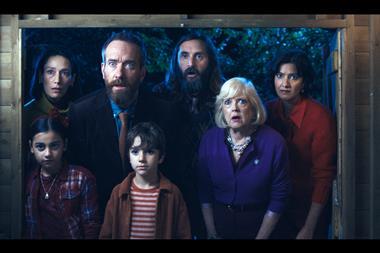
-
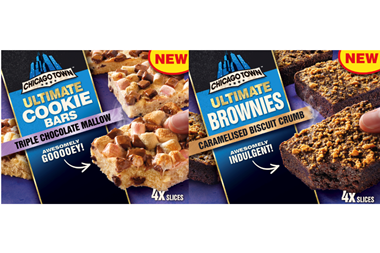
-
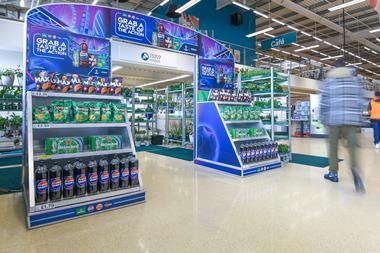
Retail media best practice: the five things that every brand needs to know
This content is provided by Tesco Media and Insight Platform



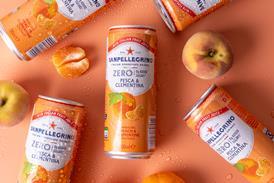









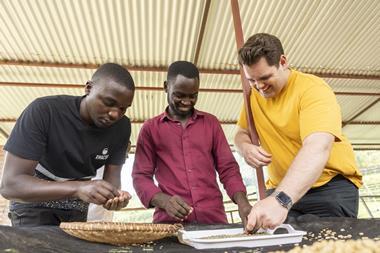
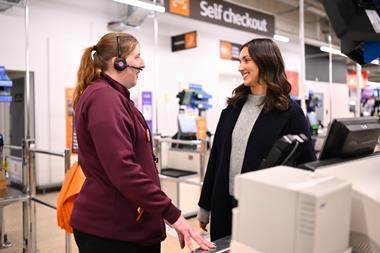
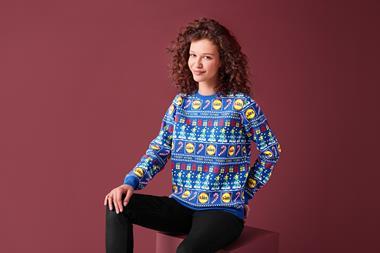
No comments yet